 W
W48th Police Precinct Station is a historic police station located at 1925 Bathgate Avenue in the Tremont neighborhood of the Bronx, New York City. It was completed in 1901 and is a freestanding, three story rectangular block, seven bays wide. The facades are composed of yellow brick with stone trim in the Italian Renaissance Revival style.
 W
WThe Ball Road-Little Salt Creek Bridge, also known as simply the Ball Road Bridge, was a bridge carrying Ball Road over Little Salt Creek in Jasper Township, Michigan. It was listed on the National Register of Historic Places in 1999. The bridge was later demolished.
 W
WThe Broadway Tunnel was a tunnel under Fort Moore Hill in Downtown Los Angeles, California. It extended North Broadway, at Sand Street, one block north of Temple Street, northeast to the intersection of Bellevue Avenue, to Buena Vista Street.
 W
WThe Buffalo History Museum is located at 1 Museum Court in Buffalo, New York, just east of Elmwood Avenue and off of Nottingham Terrace, north of the Scajaquada Expressway, in the northwest corner of Delaware Park.
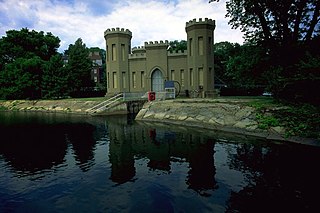 W
WCastle Gatehouse, Washington Aqueduct is a pumping station at the Georgetown Reservoir on the Washington Aqueduct in The Palisades neighborhood of Washington, D.C., United States. The building is on the National Register of Historic Places and contributes to the Washington Aqueduct National Historic Landmark.
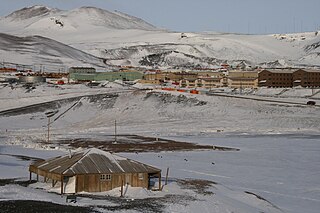 W
WDiscovery Hut was built by Robert Falcon Scott during the Discovery Expedition of 1901–1904 in 1902 and is located at Hut Point on Ross Island by McMurdo Sound, Antarctica. Visitors to Antarctica, arriving at either the US Base at McMurdo or New Zealand's Scott Base are likely to encounter Discovery Hut as both are located on Hut Point. Discovery Hut is just 300m from McMurdo Base. The hut has been designated a Historic Site or Monument, following a proposal by New Zealand and the United Kingdom to the Antarctic Treaty Consultative Meeting.
 W
WThe Fifth Regiment Armory is a historic National Guard armory located in Baltimore, Maryland, United States. It is an imposing, fortress-type structure situated in midtown Baltimore. It consists of a full basement, a first floor containing a 200 foot by 300 foot drill hall, a mezzanine or "balcony" level, and a newer second level housing the trussed steel drill hall roof. The façade features buttresses, parapets, casement windows, and a crenellated roofline, giving the appearance of a medieval fortification. It was the site of the 1912 Democratic National Convention.
 W
WThe Fort Atkinson Water Tower is an unused water tower that was built in 1901 in Ft. Atkinson, Wisconsin. It was added to the National Register of Historic Places on November 15, 2005.
 W
WFort Mansfield was a coastal artillery installation located on Napatree Point, a long barrier beach in the village of Watch Hill in Westerly, Rhode Island.
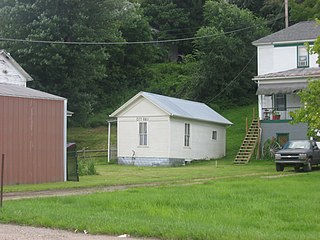 W
WFriendly City Building and Jail is a historic town hall and jail located at Friendly, Tyler County, West Virginia. It was built in 1901, and is a small, one story frame building. It has a gable roof and sits on a stone foundation. It has two rooms, the meeting room and jail cell. It continues to be used by the town as a meeting place for monthly town board meetings.
 W
WThe Little Sioux River Bridge is a historic structure located northwest of Spencer, Iowa, United States. It spans the Little Sioux River for 180 feet (55 m). The bridge was originally located at Main Street, south of downtown Spencer over the same river. Two previous bridges had been located at the original location beginning in 1875, with a replacement in 1889. Clay County contracted with Clinton Bridge and Iron Works from Clinton, Iowa in 1900 to build this Pennsylvania through truss span. Completed the following year, it is the rare example of this type of bridge built in Iowa. A concrete arch span replaced this bridge in 1915, and it was moved to its current location the same year. The concrete abutments were built by Thor Construction Company from Cedar Falls, Iowa. The bridge was listed on the National Register of Historic Places in 1998.
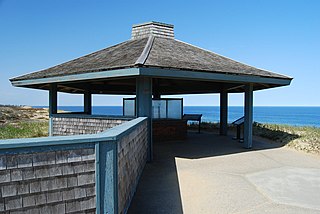 W
WThe Marconi Wireless Station Site in South Wellfleet, Massachusetts, is the site of the first transatlantic wireless communication between the United States and Europe, on January 18, 1903. At this location, now in the Cape Cod National Seashore, inventor Guglielmo Marconi erected a large antenna array on four 210-foot (64 m) wooden towers, and established a transmitting station powered by kerosene engines that produced the 25,000 volts of electricity needed to send signals to a similar station in Poldhu, Cornwall, United Kingdom. The first transmission received in North America by Marconi was at Signal Hill, St. John's, Newfoundland and Labrador in 1901; Glace Bay, Nova Scotia was the site of the first such two-way transmission, in 1902.
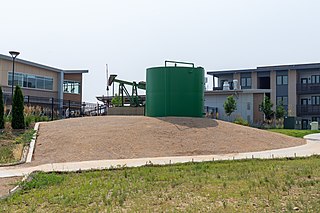 W
WThe McKenzie Well is an oil well site in Boulder, Colorado. The Boulder Oil Field was discovered on this site in 1901, making it the oldest oil-producing site in the entire Denver Basin, and one of the oldest in the western United States. The first producing well on the site was drilled in 1902. Peak production at 85,000 barrels was reached in 1909.
 W
WThe Medina Armory is located on Pearl Street in Medina, New York, United States. It is a large stone building constructed at the beginning of the 20th century.
 W
WThe Metropolitan District Commission Pumping House is a historic water pumping station, adjacent to Spot Pond in the Middlesex Fells Reservation, on Woodland Road in Stoneham, Massachusetts. Built in 1901 by the Metropolitan District Commission (MDC), it is one of Stoneham's finest examples of Renaissance Revival architecture. The building was listed on the National Register of Historic Places in 1984, and included in the Middlesex Fells Reservoirs Historic District in 1990.
 W
WThe Neuer Marstall is a listed historic building in Berlin, Germany located on the Schloßplatz and the Spree River. Completed in 1901 and facing the former Royal Palace, the neo-Baroque "New Stables" once sheltered the Royal equerry, horses and carriages of Imperial Germany. The complex also included three enclosed courtyards, a riding school, and the Knights College.
 W
WThe Niles Depot Museum is located in the former Southern Pacific Railroad colonnade-style passenger depot built in 1901, and freight depot, located in the Niles District of Fremont, California. The museum is operated by the Niles Depot Historical Foundation and features exhibits and artifacts about area railroads, including the early Southern Pacific Railroad and Western Pacific Railroad, as well as the current Union Pacific Railroad and Amtrak.
 W
WThe Rock Mill Covered Bridge, on State Route 41 at Rock Mill, Ohio in Bloom Township, Fairfield County, Ohio, is a Queen Post truss bridge. It was listed on the National Register of Historic Places in 1976.
 W
WThe Sludge Press House was an historic wastewater treatment facility building at the Fields Point Sewage Treatment Plant at Fields Point, Rhode Island in Providence, Rhode Island. It was a two-story brick structure, located near the center of the Field's Point facility, just east of the Chemical Building. It was about 138 by 51 feet in size, with a hip roof, and was built 1899-1901 as part of Providence's first wastewater treatment system. It housed the facilities used at the end of the treatment process by which remaining solids were dewatered and compressed before final disposal.
 W
WThe Tenth Precinct Station House is an historic structure located in the Park View neighborhood of Washington, D.C. The building was designed by the architectural firm of A.B. Mullett & Co. and was completed in 1905. It was constructed for Metropolitan Police Department.
 W
WThe former Torrington Fire Department Headquarters is a historic building located at 117 Water Street in Torrington, Connecticut. It is located immediately adjacent to the modern headquarters at number 111. Completed in 1901, it is an elegant example of Romanesque Revival architecture, and served as the city's main firehouse until 1980. The building was listed on the National Register of Historic Places on December 31, 1987.